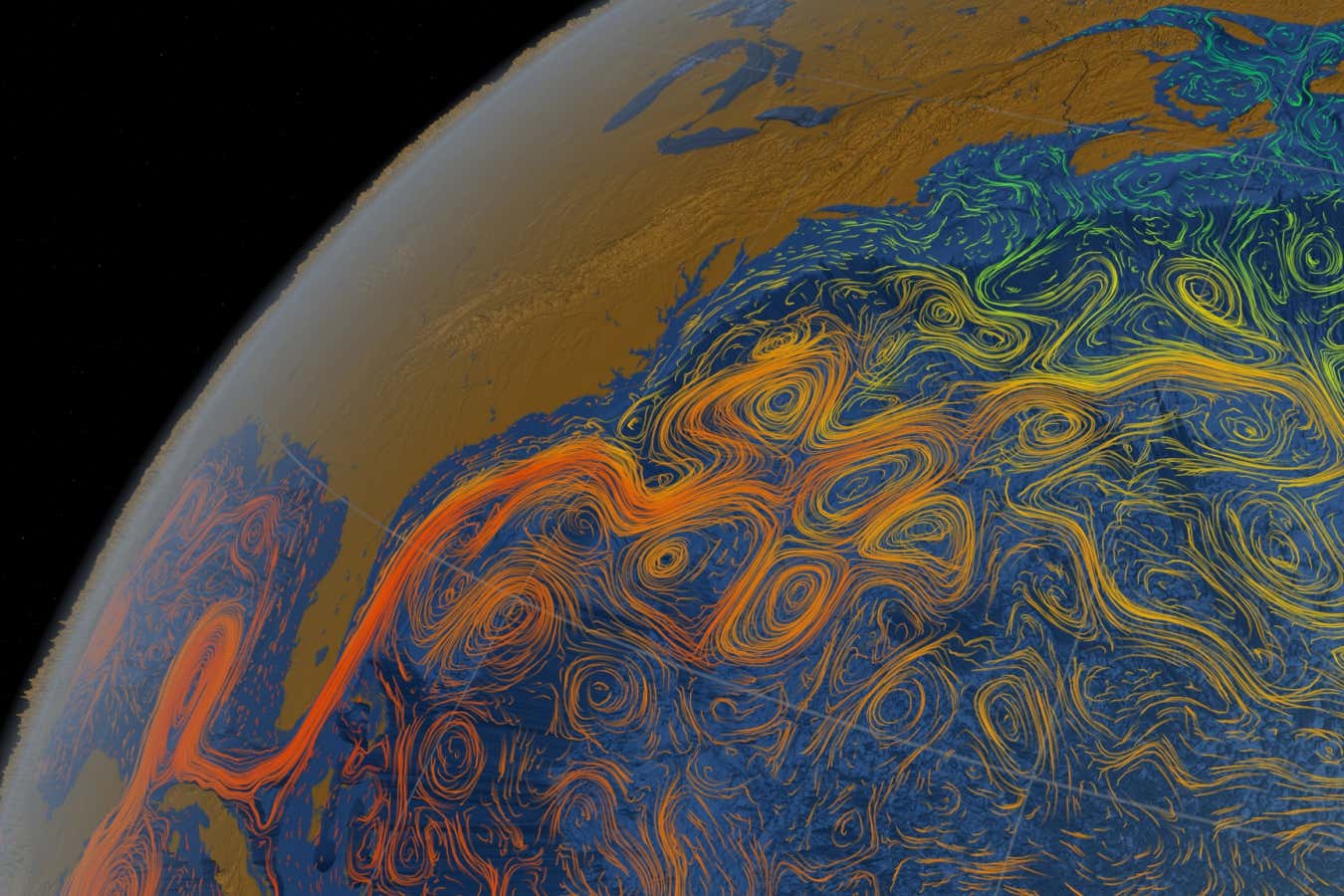The weakening of the Atlantic Meridional Overturning Circulation (AMOC) is boosting the sea level along the New England coast on top of sea level rise from melting ice, adding to flooding
By James Dinneen
16 May 2025
The AMOC is a system of ocean currents that circulates water within the Atlantic Ocean
NASA/Goddard Space Flight Center Scientific Visualization Studio
The slowdown of a major current in the Atlantic Ocean is boosting the sea level and associated flooding in the Northeast US, on top of the already-rising sea level due to climate change. A total collapse of this Atlantic Meridional Overturning Circulation (AMOC) as the planet warms could raise the sea level even further.
“If the AMOC collapsed, this would dramatically increase the flood frequency along the US coast, even in the absence of strong storms,” says Liping Zhang at the Geophysical Fluid Dynamics Laboratory of the US National Oceanic and Atmospheric Administration (NOAA) in New Jersey. “Even partial weakening [of the current] can already have substantial impacts.”
Read more
The jet stream may be starting to shift in response to climate change
Advertisement
Melting ice sheets and warmer water due to human-caused climate change are leading to a rise in average sea level, but the rate of sea-level rise isn’t the same everywhere. For instance, some coastal land is sinking, speeding the relative rate of sea-level rise in those areas. Local sea level is also shaped by how heat, water and salt circulate in the ocean, with warmer and fresher water taking up more space than colder, saltier water.
The US north-east coast has seen sea levels rising faster than the global average in recent decades. In addition to sinking land, a slowdown in the AMOC – which transports warm water from lower latitudes to the North Atlantic, where it cools, gets saltier and sinks – has long been proposed as a possible driver for this. When this overturning circulation weakens, deep water along the path of the current is expected to warm and expand, sloshing more water onto the shallow continental shelf.
The AMOC naturally varies in strength on different timescales, and climate change has contributed to a slowdown in recent decades as melting ice freshens the North Atlantic and its waters warm. But it wasn’t clear whether this slowdown was making a big difference to sea level.
